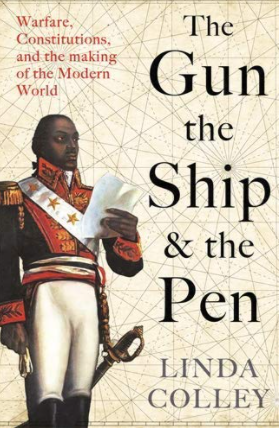
The Powerful world free from foreign constraint


Linda Colley encapsulate a common purpose to define power, the rights and responsibilities of states and citizens by starting with the Corsican Constitution of 1755 as both monarchs and radicals play a role, from Catherine the Great of Russia with her remarkable Nakaz to Sierra Leone’s James Africanus Horton to Tunisia’s Khayr-al-Din, a creator of the first modern Islamic constitution.
Documents often adopted under great pressure, whose purpose is to make clear to the world that a new state exists and is free from foreign constraint – as with the US in 1789. Autocrat Louis XVI of France, facing financial meltdown after vast military expenditure, sullenly called the Estates General to raise taxes in 1789. The commoners’ “estate” broke ranks and raise the banner of revolution. Nine constitutional drafts were one result. Napoleon Bonaparte, who in his European Empire building saw constitutions of manpower and taxation, and to legitimise his own power.
Constitution claim to be frank and open, but rarely are. The US constitution, aimed at providing “ the blessings of Liberty”, but wholly ignored both black slaves and Native Americans. Black Americans only appeared in 1865, when the 13th amendment abolished slavery at the end of the civil war. The Native Americans fared no better confined and massacred, those who managed to settle included the Cherokee of Georgia ( a slave state) who, guided by a literate and idealistic man named Sequoyah, in 1827 adopted a Constitution of the Cherokee Nation, claiming a territory for their nation “Hereafter to remain uanalterably the same”. The claim was denied by both the federal government and the Georgian legislature. Most of Cherokee were forced to migrate to Oklahoma, a travail that killed 4, 000 of them.
The 1811 constitution of Venezuela, the first South American state to declare independence from Spain, was displayed In every town and village, “The translated and dispatched to multiple locations overseas”.
London, the capital of a vast, expanding empire, was also the centre of anti-imperial, nationalist agitation, largely undisturbed by the authorities.
Jeremy bentham believed Britain should have a proper codified constitution to rationalise a fuzzy unintended system of law, custom and precedent which still exists today. But he faced a comfortable consensus that a Magna Carta that limited monarchical power and laws passed by an increasingly powerful parliament were enough.
The Pitcairn, established in 1790 by the mutineers of the Bounty. In 1838, the Pacific Island and its 100-strong population was visited by Russell Elliott, a British Naval captain, who sketched out “ a few hasty regulations” including votes for women and care for the environment. In1804, Haiti was the first state founded by a slave revolt after an uprising against French rule. Under Jean-Jacques Dessalines ( Emperor Jacques I) the former colony adopted a constitution for those who have been so unjustly considered as outcast children.
Japan’s 1889 constitution , the first to be adopted by an east Asian, non-white state, was the fruit of travel and study in the west by young men who went on to be leaders in the Meiji period.
Colley explores the significance of the first constitution to enfranchise all adult women on Pitcairn Island in the Pacific in 1838, one of the most original global histories in decades.
Colley ends with Vladimir Putin, the constitution of the early 1990s has, under his rule been undermined as far as some of its provisions for free expression and fundamental liberties are concerned, yet proved resilient enough to moderate acts of excessive power.
The Gun, the Ship and the Pen: Warfare, Constitutions and the Making of the Modern World by Linda Colley, Profile Books £25, 502 pages.
.
